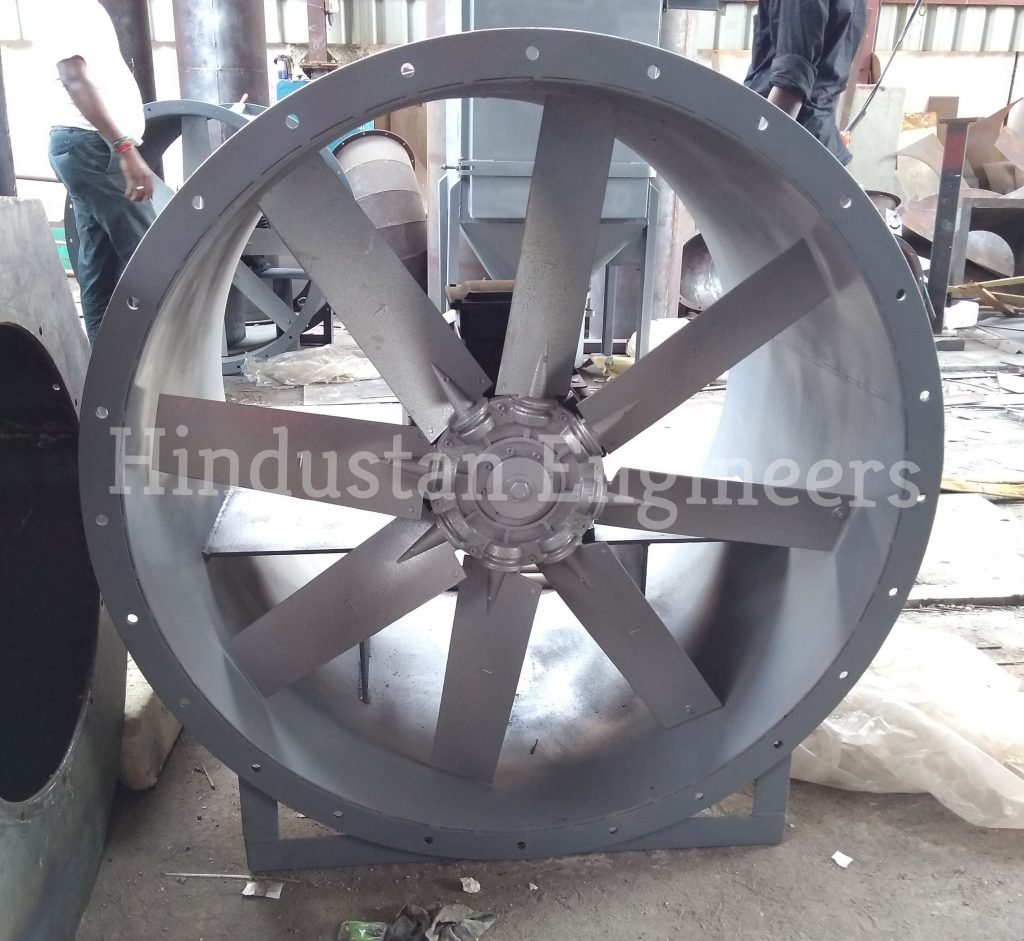Axial Fan

Axial flow fans, as the name indicate draws the air and blows forward, which moves in the axis of the fan. There would be no centrifugal effect on the airflow generated. Guides or stator vanes serve to smoothen/ straighten the airflow and improve efficiency. In general, an axial-flow fan is suitable for a larger flow rate with a relatively small pressure gain and a centrifugal fan for comparatively smaller flow rate and a large pressure rise. They are used to supply fresh air, to suck air from return air trenches, to suck air from rotary filters, to exhaust air out etc. Depending on the purpose and the quantity of air handled the size and materials of the fan are decided. In a typical axial fan, the effective progress of the air is straight through the impeller at a constant distance from the axis. The primary component of blade force on the air is directed axially from inlet to outlet and thus provides the pressure rise by a process that may be called direct blade action. Axial-flow fans with four or six blades and diameters of 6–18 ft are typically employed in air-cooled heat exchangers, although larger and smaller fans are occasionally used as well. Plastic fan blades are used for air temperatures up to 175°F; metal (usually aluminum) blades are required for higher air temperatures.

HINDUSTAN AXIAL fans have a wheel inside a cylindrical housing, with close clearance between blade and housing to improve air flow efficiency,. The wheel turns faster than propeller fans enabling operation under pressures up to 200mm WG. The efficiency of AXIAL fan is up to 65-70%.
WE HAVE AXIAL FANS UP TO 20HP.
